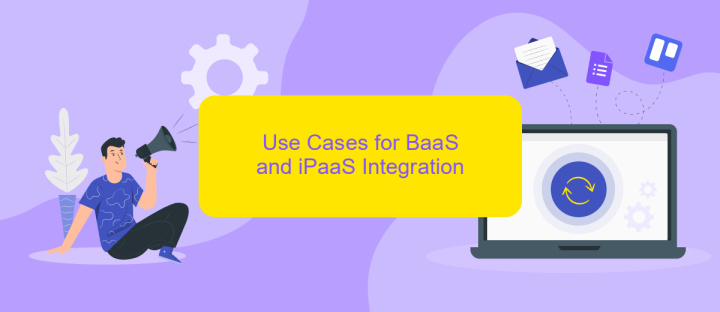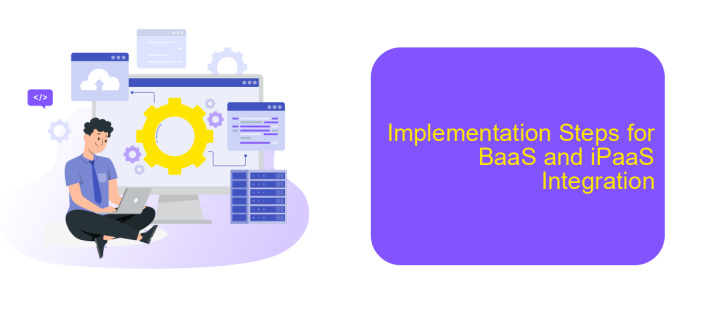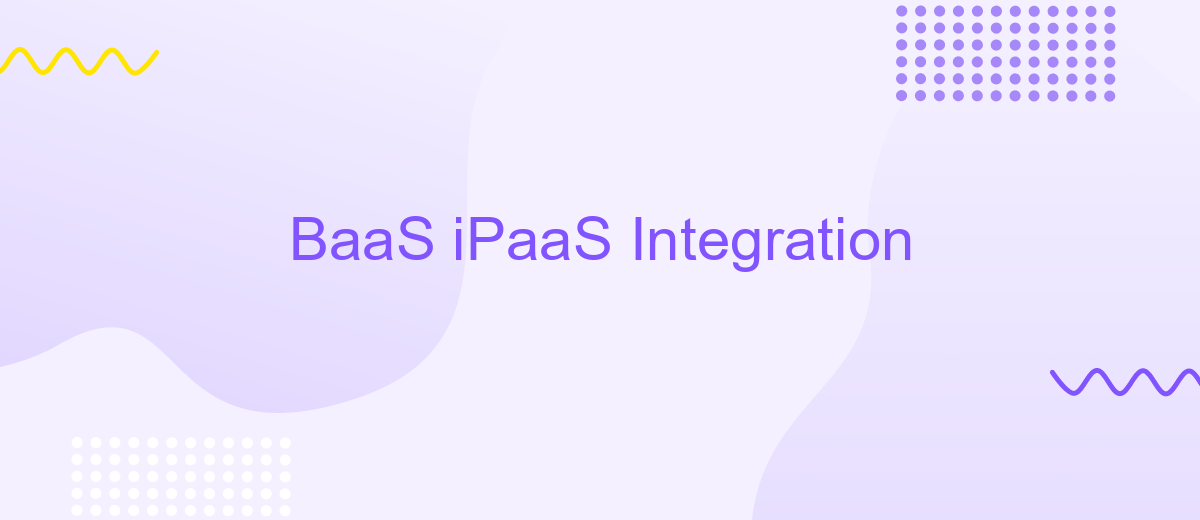BaaS iPaaS Integration
In today's rapidly evolving technological landscape, businesses are increasingly turning to cloud-based solutions to streamline operations and enhance scalability. The integration of Backend as a Service (BaaS) and Integration Platform as a Service (iPaaS) offers a powerful combination, enabling seamless data connectivity and efficient application management. This article explores the benefits and practical applications of BaaS and iPaaS integration for modern enterprises.
Introduction to BaaS and iPaaS
In today's digital landscape, businesses are increasingly relying on cloud-based services to streamline operations and enhance scalability. Two prominent solutions that have emerged in this space are Backend as a Service (BaaS) and Integration Platform as a Service (iPaaS). These technologies offer unique advantages that can significantly improve how companies manage their IT infrastructure and integrate various applications.
- BaaS: Provides developers with a ready-to-use backend infrastructure, including databases, authentication, and server-side logic.
- iPaaS: Facilitates the integration of disparate systems and applications, enabling seamless data flow and process automation.
By leveraging BaaS, businesses can expedite their development cycles, allowing teams to focus on building front-end features. On the other hand, iPaaS solutions like ApiX-Drive simplify the complex task of connecting multiple applications and services, ensuring that data is synchronized in real-time. Together, BaaS and iPaaS create a robust framework that supports both rapid development and efficient integration, making them indispensable tools for modern enterprises.
Benefits of BaaS and iPaaS Integration

Integrating Backend-as-a-Service (BaaS) with Integration Platform-as-a-Service (iPaaS) offers numerous advantages for businesses looking to streamline their operations. BaaS provides a robust backend infrastructure, allowing developers to focus on frontend development and user experience. When combined with iPaaS, which facilitates seamless integration between various applications and services, businesses can achieve greater efficiency and flexibility. This integration minimizes the need for extensive coding and manual data handling, enabling quicker deployment of applications and reducing time-to-market.
Moreover, services like ApiX-Drive play a crucial role in simplifying the integration process. ApiX-Drive allows businesses to automate data transfer between different systems without requiring deep technical knowledge, making it easier to connect BaaS with various third-party applications. This not only enhances data consistency and accuracy but also reduces operational costs by eliminating the need for multiple standalone solutions. Ultimately, the integration of BaaS and iPaaS, supported by tools like ApiX-Drive, empowers businesses to innovate faster and maintain a competitive edge in the market.
Use Cases for BaaS and iPaaS Integration

Integrating Backend-as-a-Service (BaaS) and Integration Platform-as-a-Service (iPaaS) can significantly enhance business operations by streamlining data flow and automating processes. These integrations are particularly useful for organizations looking to improve efficiency and scalability without the need for extensive in-house development.
- Real-Time Data Synchronization: Businesses can synchronize data between various applications in real-time, ensuring that all systems are up-to-date. For instance, a CRM system can be integrated with an email marketing platform using iPaaS solutions like ApiX-Drive.
- Automated Workflow Management: Automate repetitive tasks by integrating BaaS with iPaaS. This can include automating customer onboarding processes, inventory management, and order processing, reducing manual errors and saving time.
- Enhanced Customer Experience: Integrations enable personalized customer interactions by unifying data from multiple sources. For example, customer support systems can be integrated with CRM and social media platforms to provide a seamless support experience.
By leveraging BaaS and iPaaS integrations, companies can achieve greater operational efficiency and agility. Services like ApiX-Drive facilitate these integrations by offering user-friendly tools that require minimal coding, making it accessible for businesses of all sizes to optimize their workflows and data management.
Implementation Steps for BaaS and iPaaS Integration

Integrating BaaS (Backend as a Service) and iPaaS (Integration Platform as a Service) can streamline your business processes and enhance productivity. The first step is to identify the specific needs of your organization and select the appropriate BaaS and iPaaS providers. Consider factors such as scalability, ease of use, and compatibility with existing systems.
Next, you need to configure the chosen platforms for seamless integration. This often involves setting up APIs, defining data flows, and ensuring secure data transfer between systems. Utilizing a service like ApiX-Drive can simplify this process by providing pre-built connectors and automation tools.
- Identify organizational needs and choose BaaS and iPaaS providers.
- Configure APIs and data flows for integration.
- Use ApiX-Drive for pre-built connectors and automation.
- Test the integration to ensure seamless data transfer and functionality.
- Monitor and maintain the integration for optimal performance.
After setting up the integration, it's crucial to thoroughly test it to ensure that all systems communicate effectively and data transfers occur without issues. Regular monitoring and maintenance will help in identifying and resolving any potential problems, ensuring long-term success of the integration.
Conclusion
The integration of BaaS and iPaaS solutions represents a significant advancement in the way businesses manage and streamline their operations. By leveraging the strengths of both backend-as-a-service and integration-platform-as-a-service, companies can achieve greater flexibility, scalability, and efficiency in their workflows. These integrations enable seamless data flow between diverse applications, enhancing overall productivity and enabling better decision-making processes.
Tools like ApiX-Drive play a crucial role in simplifying the integration process, allowing businesses to connect various applications without extensive coding or technical expertise. This democratization of technology ensures that even small and medium-sized enterprises can benefit from sophisticated integration capabilities. As the digital landscape continues to evolve, the synergy between BaaS and iPaaS will become increasingly vital, empowering organizations to stay competitive and responsive to changing market demands.


FAQ
What is BaaS and iPaaS integration?
How does iPaaS facilitate integration with BaaS?
What are the benefits of integrating BaaS with iPaaS?
Can non-technical users set up BaaS and iPaaS integrations?
What are some common use cases for BaaS and iPaaS integration?
Time is the most valuable resource for business today. Almost half of it is wasted on routine tasks. Your employees are constantly forced to perform monotonous tasks that are difficult to classify as important and specialized. You can leave everything as it is by hiring additional employees, or you can automate most of the business processes using the ApiX-Drive online connector to get rid of unnecessary time and money expenses once and for all. The choice is yours!

